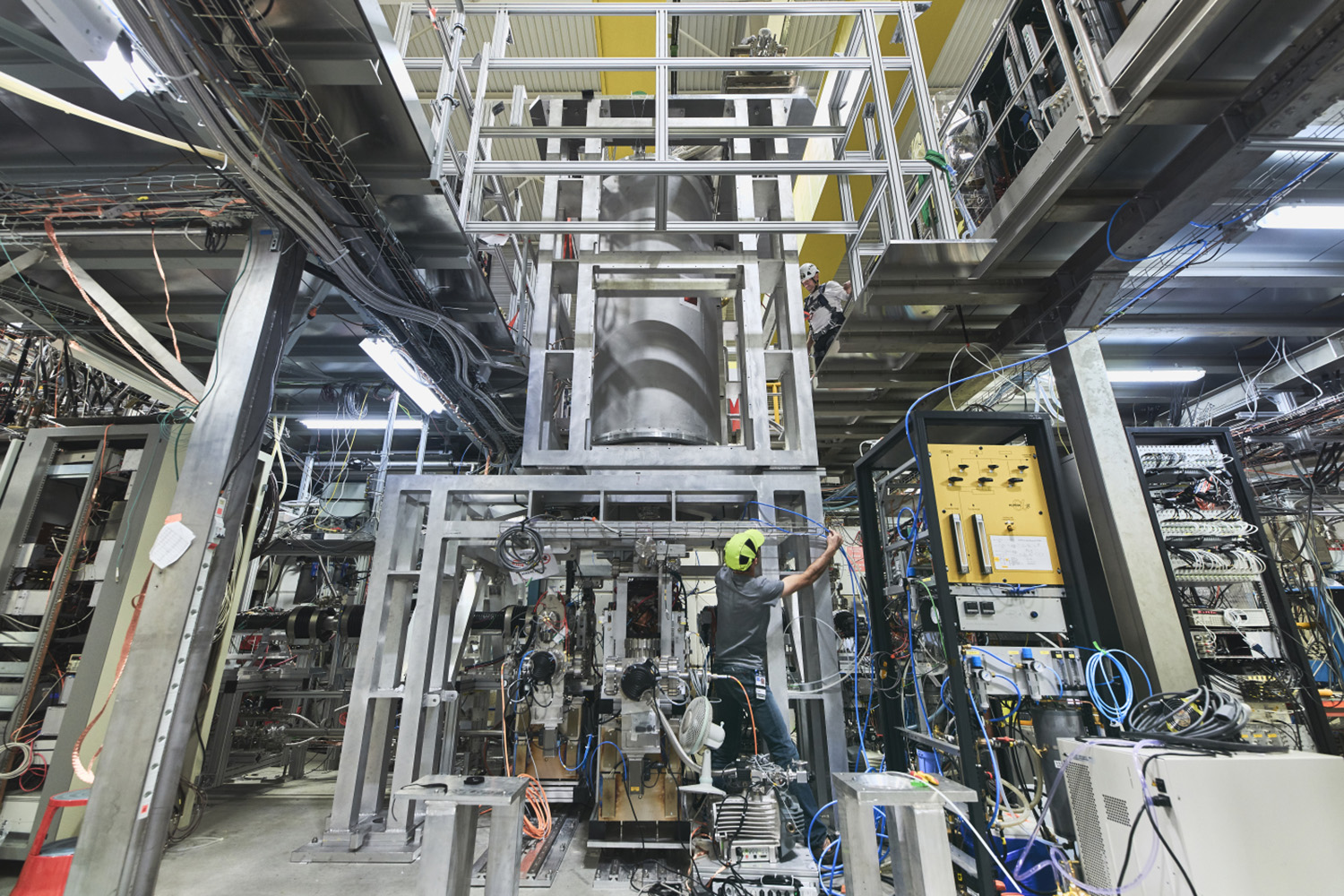
What happens when you take a bit of antimatter and drop it? That’s the question being probed in a new series of antimatter gravity experiments being conducted by the European Organization for Nuclear Research, more commonly know as CERN, where outstanding antimatter experiments are just another day in the office. The goal to unravel one of the many unknowns of antimatter — whether it falls in response to gravity at the same rate as ordinary matter, or if it instead behaves peculiarly.
You may remember this puzzling fact from high school physics class: When you drop two objects with different masses in a vacuum (that is, in the absence of friction) they’ll each descend at exactly the same rate. When dropped in a vacuum, a feather and a bowling ball both accelerate at a rate of 9.81 meters per second squared. But how does antimatter react?
“[It’s a] very simple, very basic question,” Jeffrey Hangst, spokesperson for one of the experiments, ALPHA, said in a video accompanying the news release. “But we don’t know the answer.”
In order to answer this question, the CERN researchers have developed two experiments called ALPHA-g and GBAR.
ALPHA-g has a lot in common with CERN’s ALPHA experiment, which binds antiprotons with positrons to create neutral antihydrogen atoms. A magnetic trap is then used to capture the neutral antihydrogen atom and shine microwaves or a laser light onto them to determine their internal structure.
The new ALPHA-g experiment uses a similar instrument, but one that’s positioned vertically, rather than horizontally, so that they can measure where the atoms are vertically once the magnetic trap is deactivated and Earth’s gravity takes hold. By recording the position, the researchers will be able to determine the effect that gravity has on the antihydrogen atoms.
ALPHA-g is the product of years of research to produce sufficient amounts of neutral antimatter, or antimatter that doesn’t have a charge. The CERN team can now produce and capture up to 1,000 antihydrogen atoms at once in its ALPHA-2 machine.
Where the ALPHA-g experiment takes on a familiar form, the GBAR experiment will pose a unique experience for the CERN researchers. GBAR will generate antihydrogen ions with one antiproton and two positrons, by using antiprotons from the ELENA deceleration ring and positrons sourced from a small linear accelerator. Once the antihydrogen ions are produced, they will be trapped and chilled to extremely low temperatures, before a laser light is used to strip them of one positron and turn them into neutral antiatoms. By then releasing the antiatoms from a height of 20 centimeters, the researchers will measure how they react.
“We are hoping that we’ll get the chance to make the first gravity measurements with antimatter, but it’s a race against time.” Patrice Pérez, spokesperson for GBAR, said. “The GBAR experiment is using an entirely new apparatus and an antiproton beam still in its commissioning phase. We hope to produce antihydrogen this year and are working toward being ready to measure the gravitational effects on antimatter when the antiprotons are back in 2021.”
After some initial tests, the researchers are now racing to get their experiments commissioned before CERN’s accelerators are deactivated for a two-year maintenance period in the next few weeks.
By revealing the effects of gravity on antimatter, researchers may be able to shed light on a quantum theory of gravity or even begin to explain why the universe seems primarily made up of matter and not its opposite.


